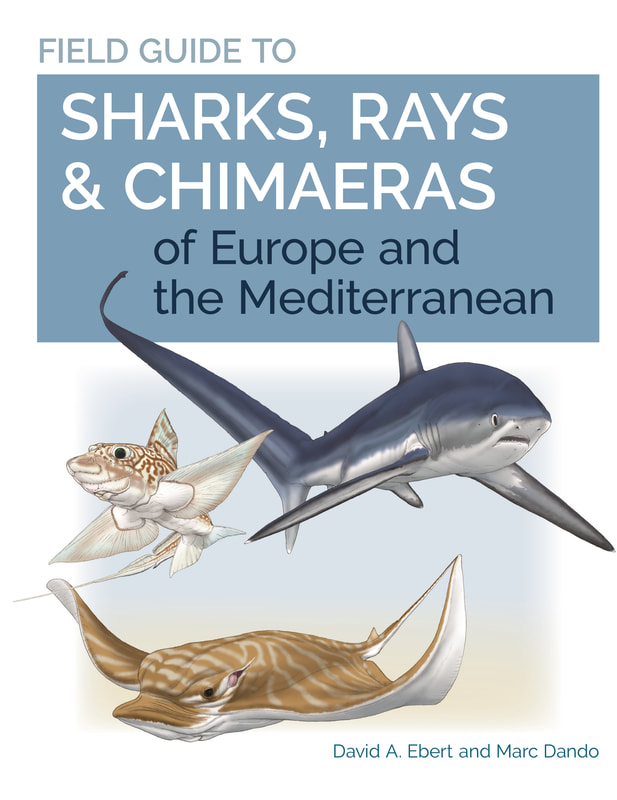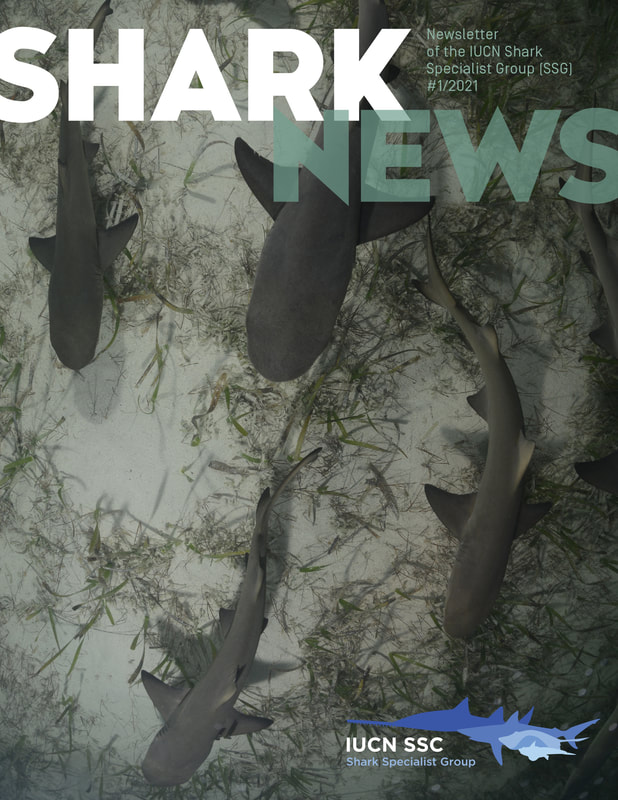|
Field Guide to Sharks, Rays, & Chimaeras of Europe and the Mediterranean
The region can lay claim to the 10th most diverse chondrichthyes fauna in the world; representing nearly 12% of all known species, including about 25 endemic European Atlantic and nine endemic Mediterranean Sea species. During the preparation of the book several vagrant species new to European Atlantic waters were recorded for the first time and have been included in the guide: the Crocodile Shark (Pseudocarcharias kamoharai), Night Shark (Carcharhinus signatus) and Sicklefin Chimaera (Neoharriotta pinnata). Three Lessepsian migratory species, which have immigrated into the eastern Mediterranean through the Suez Canal from the Indian Ocean, one of which is the Blacktip Reef Shark (Carcharhinus melanopterus), are also included. African Gulper Shark (Centrophorus lesliei), the most recently described shark known to occur in the region, and Duhamel’s Catshark (Scyliorhinus duhamelii), a rare endemic Mediterranean Sea species only recently found to be distinct from the well-known Smallspotted Catshark (Scyliorhinus canicula) are also included Lavishly illustrated this guide is packed with an extraordinary level of detailed information. Following an introduction on biodiversity and habitats is an extensive section on conservation and management in the region by Ali Hood (Director of Conservation at the Shark Trust). The introduction is concluded with a How to Use this Book section including a comprehensive topography of chimaeras, rays and sharks, and a subsection on tooth types. Key guides are a fundamental and integral part of this publication. Our aim is to enable any reader to be able to identify any cartilaginous fish to species level. The key guides start with a fully illustrated dentition and eggcase guides to the main groups in this book. The reader is then taken onto the start of the species illustrated key guides. These appear throughout the publication and are designed as a step-by-step process (dichotomous) for aiding identification; from order to family, genus and finally species. Some of the species such as the demon catsharks (Apristurus spp.) are extremely difficult, even for experts to identify. The key guides contain the most current information available to aid identification of these more challenging species. Scattered throughout the book are also comparison plates to further help identification. “A marvellous book, rich in illustrations, beautiful, and
scientifically detailed.“ Fabrizio Serena | IUCN SSC Shark Specialist Group (SSG) Regional Vice-Chair for the Mediterranean Region Each species has a full-page account, which includes comprehensively labelled colour illustrations, at-a-glance information icons, a depth guide, size guide, and distribution map. Accompanying text describes the key external characteristics, information on habitat, biology (including reproductive mode, age and diet), and the IUCN Red List status for the region. Finally four appendices cover: a glossary; maps showing regional depths, sea currents, average salinity, sea surface temperatures, marine climate zones, and continental shelf and oceanic zones; field observations which includes a general introduction, a best practice handling guide and a comprehensive illustrated key measurements guide; and a regional shark fin identification guide. This guide is an essential resource for fisheries management, trade regulation and shark conservation, and anyone with a keen interest in learning about sharks and their relatives occurring in European Atlantic waters and the Mediterranean Sea. As Paul Cox of the Shark Trust says "This book is the definitive field guide to the sharks, rays, and chimaera of Europe and the Mediterranean." “What a fantastic book. One of the most comprehensive regional guides I have seen. Absolutely superb in all aspects.”
Mark Harris, FFC Elasmobranch Studies David A. Ebert is program director of the Pacific Shark Research Center and a research faculty member at Moss Landing Marine Laboratories. Twitter @LostSharksGuy Instagram @LostSharkGuy Facebook @LostSharks Marc Dando is a scientific illustrator and publisher whose books include Guide to the Manta and Devil Rays of the World and A Pocket Guide to Sharks of the World. Twitter @dando_ marc Instagram @marc.dando.92 Field Guide to Sharks, Rays, & Chimaeras of Europe and the Mediterranean by David Ebert and Marc Dando is available now from all good bookshops including direct from Princeton University Press.
Comments are closed.
|
Archives
May 2024
Categories
All
|


